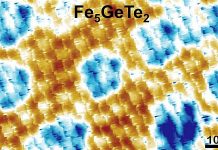
Scientists at the University of Wisconsin–Madison have developed the most sensitive method yet for detecting and profiling single molecules.
This breakthrough has the potential to significantly improve our understanding of how the building blocks of matter interact with each other.
The new technique could impact fields ranging from drug discovery to the development of advanced materials.
The details of this achievement were published this month in the journal Nature. The new method represents a major advance in observing individual molecules without the need for fluorescent labels.
Although fluorescent labels are useful in many applications, they can alter molecules in ways that obscure their natural interactions. This new label-free method makes detecting molecules almost as easy as if they had labels.
“We’re very excited about this,” says Randall Goldsmith, a UW–Madison professor of chemistry who led the work.
“Capturing behaviors at the level of single molecules is an amazingly informative way of understanding complex systems, and if you can build new tools that grant better access to that perspective, those tools can be really powerful.”
While researchers can learn a lot from studying materials and biological systems at larger scales, Goldsmith emphasizes that observing the behavior and interactions of individual molecules is crucial for gaining deeper insights.
He compares it to understanding how nations interact by looking at interactions between individual people.
Goldsmith has been fascinated by single molecules since his postdoctoral research at Stanford University over a decade ago. He worked under chemist W.E. Moerner, who won the Nobel Prize in Chemistry in 2014 for developing the first method to observe a single molecule using light. Since then, researchers worldwide have been refining ways to observe these tiny particles.
The method developed by the UW–Madison team uses a device called an optical microresonator, or microcavity. This microcavity is a tiny space where light can be trapped for a few nanoseconds, allowing it to interact with a molecule. Microcavities are typically found in physics or electrical engineering labs, not chemistry labs. Goldsmith’s innovative approach of combining ideas from different scientific fields earned him a Polymath award from Schmidt Futures in 2022.
Microcavities are built from extremely small mirrors placed on top of a fiber optic cable. These mirrors bounce light back and forth rapidly within the microcavity.
By allowing molecules to enter the cavity and passing light through it, researchers can detect the molecules and learn about their properties, such as how fast they move through water and their shape or conformation.
Understanding a molecule’s conformation is crucial, especially for studying biomolecules’ interactions.
For example, when evaluating if a protein can interact with a small-molecule drug, researchers can see if the drug causes a conformational change in the protein.
Other methods to study this require large amounts of material and time-consuming analyses, but the new microcavity technique can provide answers in seconds.
The team, including Lisa-Maria Needham, a former postdoctoral researcher now at the University of Cambridge, has filed a patent for the device.
Goldsmith says the device and methods will be refined over the next few years, and the team is already exploring various applications in spectroscopy.
“We’re excited about many other applications in spectroscopy,” Goldsmith says. “We hope we can use this as a stepping stone to other ways to learn about molecules.”



